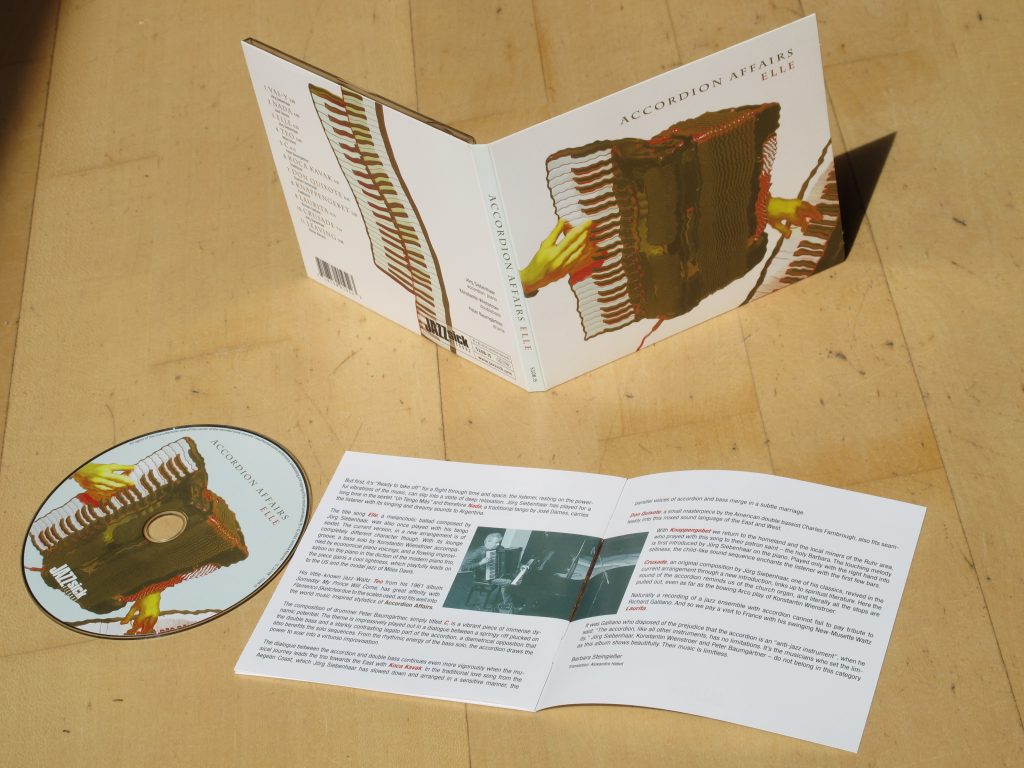There seems to be no shortage of good European jazz accordionists these days. Indeed, the case could be made that Europeans are more supportive of the accordion as a legitimate jazz instrument than North American audiences. Personally, I have made every effort to not only see any French jazz accordionist that comes my way, but also to meet and chat with this artist, a list that now includes Richard Galliano, Daniel Mille, Vincent Peirani, Marcel Azzola, Didier Ithursarry, Lionel Suarez, and David Rivière.
During my stay in Germany, I questioned how I could keep up this pace of seeing great jazz accordionists. For starters, the only German jazz accordionist I had previously heard of was Klaus Paier (who has written a pretty handy jazz accordion reference book), and as it turns out he is Austrian, not German! My hopes thus turned to seeing some of my favorite French artists on tour in Germany, which is a risky bet because France has a robust summer festival circuit, and after that who wants to tour northern Europe in the winter?
So, it was with great pleasure and surprise that I recently discovered a German accordionist. Jörg Siebenhaar leads ‘Accordion Affairs’, and the project truly has the feeling of a family affair as Jörg, who is blind, is warmly accompanied up to the stage by his friend and double bassist, Konstantin Wienstroer, followed by drummer Peter Baumgärtner. The audience is in for a big surprise though, when the trio starts to play … as a quartet! Rather than doubling on accordion and piano by switching back and forth between the two instruments, Jörg, seated at a piano, plays the accordion and the piano simultaneously. Watch this live video of Jörg Siebenhaar’s original composition Elle to see how he accompanies his own accordion lines (played by his right hand) with piano chords on his left hand.
While many keyboardists can play two keyboards simultaneously (click here to see Cory Henry’s interpretation of Giant Steps using two Moog keyboards) and the right side of Jörg’s accordion is effectively a vertical piano keyboard, a great amount of finesse and coordination is still required from the left hand to operate the bellows and provide articulation. So how is this accomplished, when the left hand is actively providing accompaniment on the piano? When I saw Accordion Affairs perform live, I observed that Jörg keeps his left hand within the bellows wrist strap, which allows manipulation of the accordion bellows. In addition, his accordion shoulder straps are fastened quite loosely. Consequently, there is much more shifting of the hips, thighs and legs to keep the accordion balanced while playing left-hand piano lines.
Interestingly, Jörg Siebenhaar is not the only artist to simultaneously play the accordion and piano. Fellow jazz accordion aficionado David Magliozzi has pointed out to me that Plamen Karadonev, a Bulgarian jazz pianist/accordionist living in the Boston area, is also noted for this (click here to watch Plamen perform For Miles).
 The Accordion Affairs trio has published one CD, Elle, which I recommend for its lush melodies and perfect group interactions. Aside from the main title composition, another highlight on the album is Richard Galliano’s jazz-waltz, Laurita. The album was released in 2016 on JazzSick Records and comes with German/English liner notes that provide some insight into each track.
The Accordion Affairs trio has published one CD, Elle, which I recommend for its lush melodies and perfect group interactions. Aside from the main title composition, another highlight on the album is Richard Galliano’s jazz-waltz, Laurita. The album was released in 2016 on JazzSick Records and comes with German/English liner notes that provide some insight into each track.
Do you know of other accordionists that accompany themselves on the piano? Or can you recommend other German jazz accordionists to listen to? I would love to hear from you!
